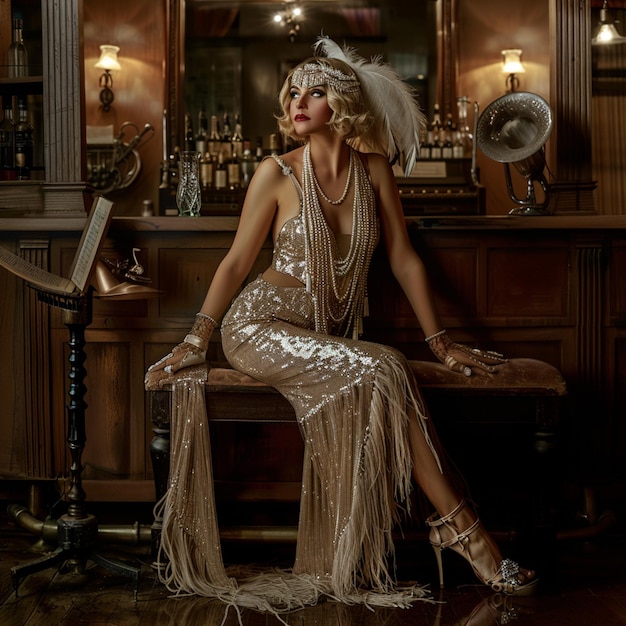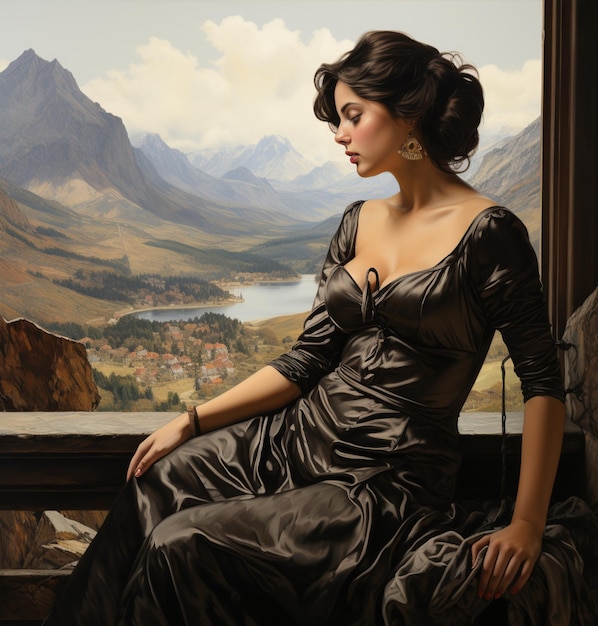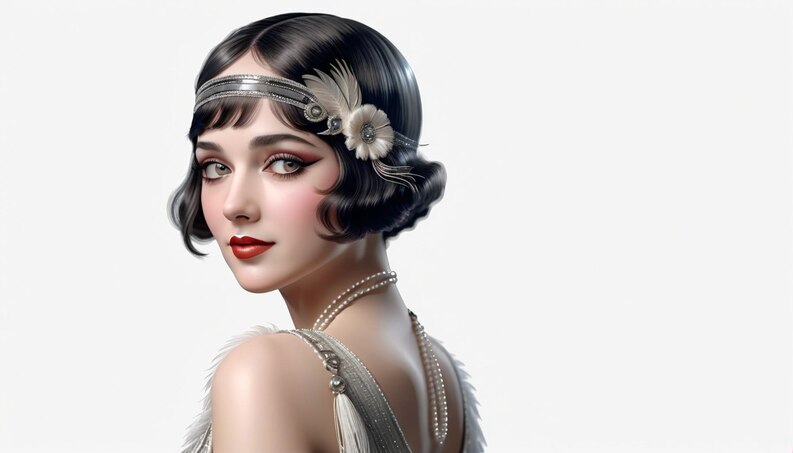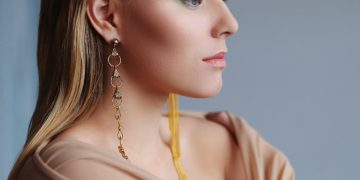Introduction to 1920s Fashion Dresses
The 1920s was an iconic decade in fashion history, marked by significant cultural changes, social rebellion, and a newfound sense of freedom. Known as the “Roaring Twenties,” this period saw women break away from restrictive clothing, opting for looser, more comfortable, and daring attire that symbolized their growing independence. Central to this transformation were the famous 1920s fashion dresses, which still inspire modern designs today.
Table of Contents
The Iconic Flapper Dress

When we think of 1920s fashion, the flapper dress immediately comes to mind. This dress was more than just a trend; it became a symbol of the modern woman who danced to jazz, embraced social change, and challenged societal expectations.
Characteristics of the Flapper Dress
Flapper dresses were loose-fitting with a straight silhouette, and their dropped waistlines created a relaxed yet chic look. The hemline, which daringly reached the knee, was considered scandalous for the time. These dresses were often adorned with fringe, beads, and sequins, making them sparkle as women danced the night away.
Why the Flapper Dress Became a Symbol of Freedom
In the post-World War I era, women were eager to shed the constraints of Victorian fashion, and the flapper dress offered just that. Gone were the restrictive corsets and layers of fabric; in their place was a dress that allowed women to move freely, expressing their individuality and newfound liberties.
Fabrics and Materials of 1920s Fashion Dresses
The materials used in 1920s fashion were a significant departure from the heavy, stiff fabrics of the previous decades. Silk, chiffon, and velvet became the fabrics of choice, offering a light, luxurious feel.
Popular Fabrics: Silk, Velvet, and Chiffon
Silk dresses with a satin finish were incredibly popular for evening wear, while velvet added a touch of elegance. Chiffon was often used for its flowy, breathable nature, ideal for the active nightlife of the time.
Use of Embellishments: Beads, Sequins, and Feathers
The 1920s was also a time of extravagance, and this was reflected in the use of embellishments like beads, sequins, and feathers. These details weren’t just decorative—they embodied the carefree, joyful spirit of the era.
The Influence of Jazz Culture on Fashion
Jazz music and dance were at the heart of the Roaring Twenties, and they played a huge role in shaping fashion. The lively, upbeat rhythm of jazz required clothing that allowed for movement and fun.
How Jazz Music and Dance Impacted Dress Styles
Jazz clubs became the epicentres of fashion, with flappers wearing dresses that swayed with every step. Loose fabrics, fringes, and low-cut backs were designed for dancing the Charleston or the Foxtrot without restriction.
The Rise of Danceable, Comfortable Clothing
Comfort was key in the 1920s. Dresses were designed to move with the body, whether it was for a night of dancing or simply walking down the street. It was the first time fashion truly embraced function and form together.
The Evolution of Evening Gowns in the 1920s

While the flapper dress was the star of the 1920s, evening gowns also underwent a revolution. Unlike the structured gowns of the past, these dresses were loose, flowy, and daringly sleeveless.
The Shift from Corsets to Comfort
One of the most notable changes in 1920s fashion was the disappearance of the corset. Evening gowns of this era were designed to highlight a woman’s natural shape without constricting her movements.
The Elegance of Sleeveless and Backless Gowns
Sleeveless and backless gowns became the go-to for formal occasions. These designs were seen as both elegant and bold, reflecting the progressive attitudes of the time.
Accessories That Completed the Look
No 1920s fashion dress was complete without the right accessories. From headbands adorned with feathers to long strands of pearls, accessories played a vital role in finishing the look.
Headbands, Feathers, and Tiaras
Headbands decorated with feathers or tiaras became an iconic part of the flapper ensemble. These accessories added a touch of glamour and whimsy to every outfit.
The Role of Long Strands of Pearls
Pearls were the ultimate symbol of sophistication, and women often wore long, cascading strands with their dresses. These pearls swung and sparkled, adding movement and elegance to the overall look.
Cloche Hats and Their Significance in Women’s Fashion
The cloche hat, with its close-fitting bell shape, was a staple of 1920s fashion. It added an air of mystery to the wearer, with its brim often falling just above the eyes.
Hair and Makeup Trends of the 1920s

Fashion wasn’t just about clothing; hair and makeup also played a significant role in defining the look of the 1920s.
The Bob Haircut and Its Popularity
The bob haircut became synonymous with the 1920s woman. Short, sleek, and often curled, the bob was a bold statement of modernity and independence.
Bold Makeup Styles: Dark Lips and Smoky Eyes
Makeup in the 1920s was all about drama. Dark red lips, smoky eyes, and heavily powdered faces became the standard for women seeking to emulate the stars of the silver screen.
The Role of Hollywood in Popularizing 1920s Fashion
Hollywood had a profound influence on fashion during this time, with actresses like Louise Brooks and Clara Bow becoming style icons.
How Film Stars Influenced Everyday Women’s Dress Choices
Women across the UK and the world began to emulate the looks they saw on the silver screen, driving the popularity of 1920s fashion dresses.
1920s Fashion Beyond the Flapper Dress
While the flapper dress stole the spotlight, there were other important styles that defined 1920s fashion.

Daywear and Workwear for Women in the Twenties
Daywear consisted of more practical garments like simple dresses, skirts, and blouses. However, even these everyday pieces incorporated the relaxed fit and loose silhouettes of the decade.
Sportswear and the Rise of Practical Clothing
The 1920s also saw the rise of sportswear for women. Practicality and comfort were becoming more important, and sports clothes reflected this shift in priorities.
The End of the Decade: Transition into 1930s Fashion
As the 1920s came to a close, so did the era of extravagant fashion. The Great Depression brought a more conservative approach to dressing.\
How the Great Depression Changed Fashion Choices
The economic hardship of the Great Depression led to a shift away from the luxurious and carefree styles of the 1920s. Fabrics became more practical and durable, with simpler designs taking precedence over the flashy embellishments of the past. The flamboyant spirit of the 1920s gave way to a more modest and restrained look as people focused on making clothes last longer, reflecting the change in societal priorities.
The Lasting Legacy of 1920s Fashion Dresses
Despite the transition into more conservative fashion in the 1930s, the influence of 1920s dresses has never truly faded. The bold experimentation, the emphasis on comfort, and the liberation from restrictive clothing laid the groundwork for many fashion trends that followed. The 1920s are often revisited in modern fashion, with designers drawing inspiration from the free-spirited, rebellious nature of the time.
How to Recreate 1920s Fashion Today
The appeal of 1920s fashion remains strong, and recreating the look for modern wear is easier than ever, whether for themed parties, everyday wear, or formal events.
Finding Vintage and Vintage-Inspired Dresses
Vintage shops and online marketplaces offer a range of authentic 1920s dresses or high-quality reproductions. Look for dresses with dropped waists, beaded embellishments, and light fabrics like silk and chiffon for an authentic look. Many modern designers also create collections inspired by the Roaring Twenties, giving you a chance to wear a piece that combines old-world charm with contemporary fashion.
Styling Tips for Incorporating 1920s Fashion Dresses in Modern Wardrobes
Incorporating elements of 1920s fashion into your everyday wardrobe can be both fun and chic. Pair a fringed or beaded flapper-style dress with modern accessories like ankle boots or a structured blazer for a contemporary twist. For a subtler nod to the era, consider adding a cloche hat, long pearl necklace, or a headband with feathers to your outfit.
Conclusion: The Enduring Appeal of 1920s Fashion Dresses
The 1920s fashion dresses represent a pivotal moment in the history of women’s clothing. They embody the spirit of liberation, freedom, and fun that defined the era. From the flapper dress to the elegant evening gowns, the fashion of the Roaring Twenties broke boundaries and set the stage for the modern styles we know today. The influence of this era continues to inspire designers and fashion enthusiasts alike, making it clear that the glamour of the 1920s will never go out of style. Visit Glamour Script Homepage for more Articles and News.
FAQs About 1920s Fashion Dresses
1. Why are 1920s dresses so significant in fashion history?
1920s dresses marked a revolutionary shift in women’s fashion. They symbolized freedom from restrictive clothing, embraced comfort, and reflected the societal changes of the time, such as women gaining more independence and breaking traditional norms.
2. How can I style a 1920s dress for a modern look?
You can modernize a 1920s dress by pairing it with contemporary accessories like ankle boots, a tailored jacket, or minimalistic jewelry. Adding elements such as a cloche hat or long pearls can also give a stylish nod to the era without feeling outdated.
3. What types of fabrics were most common for 1920s dresses?
Silk, chiffon, and velvet were popular choices for 1920s dresses. These fabrics were lightweight, allowing for movement and comfort, which was essential for the lively dances and social events of the time.
4. Did the 1920s fashion only revolve around flapper dresses?
While flapper dresses were iconic, 1920s fashion also included other styles like elegant evening gowns, practical daywear, and sporty attire. Each served a different function but shared the decade’s common themes of comfort and ease.
5. How did 1920s fashion influence modern-day fashion?
1920s fashion laid the foundation for many modern trends. The emphasis on comfort, loose silhouettes, and bold accessories from the 1920s has resurfaced in various ways over the years, influencing everything from casual wear to evening gowns.

















































